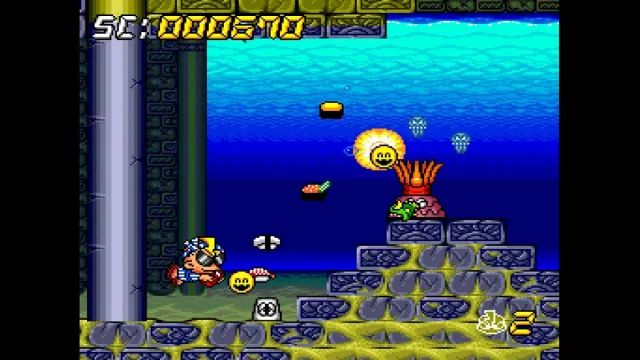Before they offered to send me a unit for review, I had the Analogue Duo preordered. It would have been the first of the company’s consoles that I ponied up for. That’s because, beyond just being a very nice boutique console, it solves a few problems for me.
The Turbografx-16 is a nightmare to collect for. Sketchy capacitors mean that a lot of them just die on the shelf, and the typical price of a Turbografx game is ridiculous. Pricecharting has the average price of a game for the console at over $100. Forget the best games the console has to offer; if you want anything aside from sports titles, you’re paying out the nose. And that’s not even taking into account Turbografx-CD games.
Because of this, the Analogue Duo is a pretty strange console to produce. Someone who is curious about collecting for the console is probably going to get discouraged quickly. This is almost a “who is this even for?” situation, but there’s an answer to that we’ll get to. It’s extremely niche. The niche-est console Analogue has taken on.
“It isn’t really financially viable in terms of development investment,” Analogue CEO and founder Chris Taber told me. Analogue didn’t make the Duo to bring in a pile of money, they did it because they love the platform, and you can easily tell.

I have a modest stack of Turbografx-16 games already in my collection, but that isn’t the reason I wanted an Analogue Duo. I want to start collecting for the PC-Engine, which is the Japanese equivalent to the TG16. While the Turbografx was a tremendous flop here in North America, the PC-Engine was a huge success. NEC was able to compete with Nintendo, initially outselling the Famicom before holding a firm second place in the market next to the Super Famicom.
As such, a lot more games were published in Japan, and the market, as a whole, is a lot cheaper. It’s still kind of pricy if you want the case they came in, but it’s not as galling as the North American prices.
But the TurboGrafx-16 and the PC-Engine are both region-locked. I spent a lot of time considering how I was going to start collecting. Was I going to buy a core PC-Engine console and build from there? Was I going to spring for the PC-Engine Duo that comes with a built-in disc drive (and is also where the Analogue Duo takes its aesthetic)? I couldn’t decide on an elegant solution that would cover all my needs.
Then, the Analogue Duo came along and provided that. It can play all the games that the TG16, the PC-Engine, and their attachments can. Plus, if I was planning on springing for the PC-Engine Duo, I would already be putting myself in the price range of Analogue’s offering. More than just a convenient upgrade, the Analogue Duo is exactly what I was looking for.

Out of the box, the Analogue Duo is a slick piece of kit. It’s slightly less wide than a TurboGrafx-16, but it has a lot less height. It’s flat enough that if I turn around and look at the shelf it’s on, I can barely see it. There’s also much less junk in the trunk compared to a TG16 with a Turbo-Booster. It feels sturdy, it looks modern, and I don’t want to touch it too much and ruin its pristine look. Speaking of which, it comes in TurboGrafx black and PC-Engine white. I went with the black because I hate white electronics. They just don’t age as well.
If there’s one downside to the design, it’s that the controller port is on the side of the unit rather than the front. Also, it uses the PC-Engine miniDIN port, so if you have TurboGrafx controllers, you’re going to need an adapter to plug them in. That’s kind of a bummer because those adapters aren’t particularly easy to find.
It’s also worth noting that the TurboGrafx-16 supported 5 players. It only had one controller port, but using a TurboTap, you could plug five controllers in. You can still do this with the Analogue Duo, but there’s a caveat: it only supports 4 wireless controllers. If you want a fifth player for something like Bomberman ’93, you need to plug a controller in alongside the 4 wireless ones or plug in a TurboTap and connect all five controllers the old-fashioned way. You can’t have, say, two wireless controllers and three original through a TurboTap. You either have one classic controller or five. There is no in-between.
Analogue shipped two 8BitDo 2.4G PCE controllers alongside my unit. These controllers are (very) slightly smaller and sleeker than the stock TG16 controllers while maintaining the same form factor. The biggest difference is an easily missed home button and turbo buttons rather than switches. The downside to that is there is no way to control the speed of the turbo unless there’s a setting that can be tweaked with 8BitDo’s software. Unfortunately, the TG16 controller isn’t very ergonomic. The d-pad is small and crammed in the bottom-left of the controller, too close to the edge. My thumbs would always cramp up during long sessions.

Thankfully, you can sync quite a range of Bluetooth and 2.4G controllers, as well as some USB. I have built quite a collection of 8BitDo controllers, and everything from my M30 to my Arcade Stick works great. I also tried a RetroBit Sega Saturn Pro controller, which connected without complaint. The documentation also lists common controllers like the Switch (and Wii U) Pro and DualSense. You might lose some of the authentic feel, but your thumbs will thank you.
Booting into the console gets you a quick walkthrough of the features of Analogue OS. I read the instructions, then promptly forgot them. I only know that Select+Down takes you to the home menu because I keep mistakenly hitting it, leaving me wanting to disable the button combo. Which I couldn’t find a way to do so in the OS settings.
The Analogue OS is a pretty neat slice of cheese on the retro console. It keeps track of games you’ve played and for how long. You’re also able to change settings to alter the visuals to suit whatever version of the console you want. There are filters that emulate the Sony Trinitron (a CRT screen), as well as the Turbo Express and PC-Engine LT handhelds. Analogue says these aren’t “Filters” since they’re created on a hardware level through the FPGA, but I really don’t know what else to call them. They also say FPGA isn’t emulation, but really what they mean is it’s not software emulation. I understand why they want to make the distinction clear, because it really isn’t the same thing, but it’s hardware emulation, which is still emulation.
The “filters” are convincing. Anyone who feels that old games only look right on CRT screens will probably appreciate them. Whether I personally prefer sharp pixels or soft glow varies with my mood. I find that the Trinitron mode sucks a lot of the color out of the screen. Other people working with FPGA for this sort of thing have been using HDR to boost the color, but that’s not an option right now. Perhaps it can be patched in with firmware updates, but if not, it’s not a huge problem.

Speaking of firmware, the Analogue Duo touts the feature of allowing save states, but it’s not implemented yet. Chris Taber says that the reason is because CD games are proving to be a challenge, but it’s supposed to be added through a firmware update sometime after launch. Likewise, sleep mode is not yet implemented, which I imagine is due to the same complication.
If you don’t want to deal with the OS, there is the option to just boot directly to the HU Card or CD when it’s detected. I think it’s pretty neat, though, even if there’s room for improvement.
In terms of running games, however, it’s flawless. The image that you get is bright and sharp at 1080p, and the screenshots here don’t really do it justice whatsoever. Compatibility is also perfect, as far as I know. I have eight TG16 games, so I can only test to that extent. Upon getting offered a review unit, I ordered some PC-Engine and CD-ROM² games in hopes that they’d arrive in time for this review, but alas, they didn’t make it.
However…
The CD-ROM² and TurboGrafx-CD weren’t exactly picky about what kind of disc you put in them. It was a problem with early disc consoles and one of the reasons Nintendo stuck to cartridges for the N64. So, I put together a Little CD-R and, bam, we’ve got Super Air Zonk. The OS even recognized the game. I then tried Tengai Makyou: Ziria with the fan translation patched into it, and while the Analogue Duo just referred to it as “CD,” it ran just fine.
While we’re on the subject, Analogue states that the Duo will run anything the original hardware would, and this includes Everdrives. I feel like buying a console for this is most valuable for people who like collecting the physical software, but I’m not going to judge if you stick an Everdrive in there. It would at least help with running fan translations.

The Analogue Duo is my first console by the company, and I am impressed. It effortlessly does everything it says on the tin with potential to do more in the future. Save states have yet to be implemented, but the store page doesn’t list them as a feature, so I’m not certain if they were ever even announced.
You probably need to be a very specific type of person to really find value in an Analogue Duo. It’s a weird crossover of a retro-loving, TurboGrafx-appreciating, import-willing gamer. It’s such an incredible niche thing, that it’s amazing that Analogue went to such efforts to reproduce the console in such luxurious depth. I’m deeply impressed. I’m also thankful, because it’s exactly the console I was looking for.
There’s only room for improvement because Analogue allowed it to be there. I’d still be recommending the Analogue Duo to my fellow niche-goblins even if there weren’t still forthcoming firmware improvements. It’s a slick modern version of the TurboGrafx 16/PC-Engine that brings the retro platform into the present with a 1080p HDMI output and other modern comforts. You can tell the team was passionate about the project because they were clearly insistent on getting it right on the first try.


